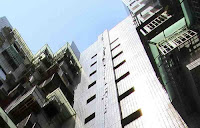Twenty four people have been confirmed dead and over five hundred have been injured with over a hundred more are still missing following an Earthquake in Taiwan that led to the collapse of a seventeen story residential building. The event happened slightly before 4.00 am local time on Saturday 6 February 2016 (slightly before 8.00 pm on Friday 5 February GMT), and was measured by the United States Geological Survey as having a magnitude of 6.7 and occurring at a depth of 10 km beneath the eastern part of the city of Tianan in the southern part of the country.
Rescue workers at the scene of the 6 February 2016 Tianan building collapse. Ashley Pon/Getty Images.
Taiwan has a complex tectonic setting, lying on the boundary between the Eurasian and Philippine Plates, with the Eurasian Plate being subducted beneath the Philippine Plate in the South and the Philippine Plate being subducted beneath the Eurasian in the East. Subduction is not a smooth process even in simple settings, with plates typically sticking together as pressure from tectonic expansion elsewhere builds up, then suddenly breaking apart and shifting abruptly, causing Earthquakes.
The motion of the tectonic plates beneath Taiwan. The University of Memphis.
Witness
accounts of Earthquakes can help geologists to understand these events,
and the structures that cause them. The international non-profit
organization Earthquake Report is interested in hearing from people who may have felt this event; if you felt this quake then you can report it to Earthquake Report here.
The approximate location of the 6 February 2016 Tainan Earthquake. Google Maps.
See also...
 Magnitude 4.7 Earthquake in central Taiwan. The Taiwan Central Weather Bureau reported a Magnitude 4.7 Earthquake at a depth of 7.4 km in the
countries Central Mountain Range, slightly before 0.45 am local time on
Wednesday 15 January 2014...
Magnitude 4.7 Earthquake in central Taiwan. The Taiwan Central Weather Bureau reported a Magnitude 4.7 Earthquake at a depth of 7.4 km in the
countries Central Mountain Range, slightly before 0.45 am local time on
Wednesday 15 January 2014...  At least one person killed by Taiwan Earthquake. A Magnitude 6.2 Earthquake at a depth of about 20 km struck central
Taiwan slightly before 1.45 pm local time (slightly before 5.45 am GMT)
on Sunday 2 June...
At least one person killed by Taiwan Earthquake. A Magnitude 6.2 Earthquake at a depth of about 20 km struck central
Taiwan slightly before 1.45 pm local time (slightly before 5.45 am GMT)
on Sunday 2 June... At least one person dead following Magnitude 6.0 Earthquake in Taiwan. Central Taiwan was struck by a Magnitude 6.0 Earthquake at a depth of
20.7 km, slightly after 10.00 am local time (slightly after 2.00 am GMT)
on Wednesday 27 March 2013, according to the...
At least one person dead following Magnitude 6.0 Earthquake in Taiwan. Central Taiwan was struck by a Magnitude 6.0 Earthquake at a depth of
20.7 km, slightly after 10.00 am local time (slightly after 2.00 am GMT)
on Wednesday 27 March 2013, according to the...
Follow Sciency Thoughts on Facebook.



